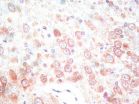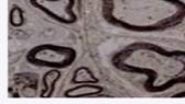(Press-News.org) WASHINGTON, Aug. 28, 2014—A new method for measuring and imaging how quickly blood flows in the brain could help doctors and researchers better understand how drug abuse affects the brain, which may aid in improving brain-cancer surgery and tissue engineering, and lead to better treatment options for recovering drug addicts. The new method, developed by a team of researchers from Stony Brook University in New York, USA and the U.S. National Institutes of Health, was published today in The Optical Society's (OSA) open-access journal Biomedical Optics Express.
The researchers demonstrated their technique by using a laser-based method of measuring how cocaine disrupts blood flow in the brains of mice. The resulting images are the first of their kind that directly and clearly document such effects, according to co-author Yingtian Pan, associate professor in the Department of Biomedical Engineering at Stony Brook University. "We show that quantitative flow imaging can provide a lot of useful physiological and functional information that we haven't had access to before," he says.
Drugs such as cocaine can cause aneurysm-like bleeding and strokes, but the exact details of what happens to the brain's blood vessels have remained elusive—partly because current imaging tools are limited in what they can see, Pan says. But using their new and improved methods, the team was able to observe exactly how cocaine affects the tiny blood vessels in a mouse's brain. The images reveal that after 30 days of chronic cocaine injection or even after just repeated acute injection of cocaine, there's a dramatic drop in blood flow speed. The researchers were, for the first time, able to identify cocaine-induced microischemia, when blood flow is shut down—a precursor to a stroke.
Measuring blood flow is crucial for understanding how the brain is working, whether you're a brain surgeon or a neuroscientist studying how drugs or disease influence brain physiology, metabolism and function, Pan said. Techniques like functional magnetic resonance imaging (fMRI) provide a good overall map of the flow of deoxygenated blood, but they don't have a high enough resolution to study what happens inside tiny blood vessels called capillaries. Meanwhile, other methods like two-photon microscopy, which tracks the movement of red blood cells labeled with fluorescent dyes, have a small field of view that only measures few vessels at a time rather than blood flow in the cerebrovascular networks.
In the last few years, researchers including Pan and his colleagues have developed another method called optical coherence Doppler tomography (ODT). In this technique, laser light hits the moving blood cells and bounces back. By measuring the shift in the reflected light's frequency—the same Doppler effect that causes the rise or fall of a siren's pitch as it moves toward or away from you—researchers can determine how fast the blood is flowing.
It turns out that ODT offers a wide field of view at high resolution. "To my knowledge, this is a unique technology that can do both," Pan said. And, it doesn't require fluorescent dyes, which can trigger harmful side effects in human patients or leave unwanted artifacts—from interactions with a drug being tested, for example—when used for imaging animal brains.
Two problems with conventional ODT right now, however, are that it's only sensitive to a limited range in blood-flow speeds and not sensitive enough to detect slow capillary flows, Pan explained. The researchers' new method described in today's Biomedical Optics Express paper incorporates a new processing method called phase summation that extends the range and allows for imaging capillary flows.
Another limitation of conventional ODT is that it doesn't work when the blood vessel is perpendicular to the incoming laser beam. In an image, the part of the vessel that's perpendicular to the line of sight wouldn't be visible, instead appearing dark. But by tracking the blood vessel as it slopes up or down near this dark spot, the researchers developed a way to use that information to interpolate the missing data more accurately.
ODT can only see down to 1-1.5 millimeters below the surface, so the method is limited to smaller animals if researchers want to probe into deeper parts of the brain. But, Pan says, it would still be useful when the brain's exposed in the operating room, to help surgeons operate on tumors, for example.
The new method is best suited to look at small blood vessels and networks, so it can be used to image the capillaries in the eye as well. Bioengineers can also use it to monitor the growth of new blood vessels when engineering tissue, Pan said. Additionally, information about blood flow in the brain could also be applied to developing new treatment options for recovering drug addicts.
INFORMATION:
EDITOR'S NOTE: Images of cocaine's effect on blood flow in the brain are available to members of the media upon request. Contact Angela Stark, astark@osa.org or 202.416.1443.
Paper: "Ultrahigh-resolution optical coherence Doppler tomography for quantitative cerebral blood flow imaging," J. You et al., Biomedical Optics Express, Vol. 5, Issue 9, pp. 3217-3230 (2014). http://www.opticsinfobase.org/boe/abstract.cfm?uri=boe-5-9-3217
About Biomedical Optics Express
Biomedical Optics Express is OSA's principal outlet for serving the biomedical optics community with rapid, open-access, peer-reviewed papers related to optics, photonics and imaging in the life sciences. The journal scope encompasses theoretical modeling and simulations, technology development, and biomedical studies and clinical applications. It is published by The Optical Society and edited by Joseph A. Izatt of Duke University. Biomedical Optics Express is an open-access journal and is available at no cost to readers online at http://www.OpticsInfoBase.org/BOE.
About OSA
Founded in 1916, The Optical Society (OSA) is the leading professional society for scientists, engineers, students and business leaders who fuel discoveries, shape real-world applications and accelerate achievements in the science of light. Through world-renowned publications, meetings and membership programs, OSA provides quality research, inspired interactions and dedicated resources for its extensive global network of professionals in optics and photonics. For more information, visit http://www.osa.org.
This is your brain's blood vessels on drugs
New imaging technique shows how cocaine shuts down blood flow in mouse brains
2014-08-28
ELSE PRESS RELEASES FROM THIS DATE:
Ancient metal workers were not slaves but highly regarded craftsmen
2014-08-28
In 1934, American archaeologist Nelson Glueck named one of the largest known copper production sites of the Levant "Slaves' Hill." This hilltop station, located deep in Israel's Arava Valley, seemed to bear all the marks of an Iron Age slave camp – fiery furnaces, harsh desert conditions, and a massive barrier preventing escape. New evidence uncovered by Tel Aviv University archaeologists, however, overturns this entire narrative.
In the course of ongoing excavations at Timna Valley, Dr. Erez Ben-Yosef and Dr. Lidar Sapir-Hen of TAU's Department of Archaeology and Near ...
Global warming pioneer calls for CO2 to be taken from atmosphere and stored underground
2014-08-28
Wally Broeker, the first person to alert the world to Global Warming, has called for atmospheric CO2 to be captured and stored underground. He says that Carbon Capture, combined with limits on fossil fuel emissions, is the best way to avoid global warming getting out of control over the next fifty years. Professor Broeker (Columbia University, New York) made the call during his presentation to the International Carbon Conference in Reykjavik, Iceland, where 150 scientists are meeting to discuss Carbon Capture and Storage.
He was presenting an analysis which showed that ...
Neuroscientists watch imagination happening in the brain
2014-08-28
"You may say I'm a dreamer, but I'm not the only one," sang John Lennon in his 1971 song Imagine.
And thanks to the dreams of a BYU student, we now know more about where and how imagination happens in our brains.
Stefania Ashby and her faculty mentor devised experiments using MRI technology that would help them distinguish pure imagination from related processes like remembering.
"I was thinking a lot about planning for my own future and imagining myself in the future, and I started wondering how memory and imagination work together," Ashby said. "I wondered if they ...
Protected areas proven to protect biodiversity
2014-08-28
Protected areas conserve biodiversity and more action is needed to ensure safeguards are in place to protect these areas, researchers say.
Published in PLOS ONE, researchers from Monash University, Stellenbosch University and the University of Exeter, used meta-analysis - combining results from different studies - to look at the past 30 years of research into these areas, to determine whether they actually protect biodiversity.
Dr Bernard Coetzee, School of Biological Sciences, said protecting an area from human exploitation made common sense, however, up until now ...
Serotonin transporter is a mifepristone pharmacological target
2014-08-28
In the central nervous system, serotonergic transmission is critically regulated by serotonin reuptake through the serotonin transporter. As a crucial pharmacological target of antidepressants, the role of erotonin transporter in treatment of major depression is well-established. Dr. Chaokun Li and co-workers from Xinxiang Medical University in China cloned the human brain serotonin transporter into Xenopus oocytes, to establish an in vitro expression system. Two-electrode voltage clamp recordings were used to detect serotonin transporter activity. Their results show that ...
Vasopressin decreases neuronal apoptosis during cardiopulmonary resuscitation
2014-08-28
Epinephrine has been shown to be a first-choice drug for cardiopulmonary resuscitation. Nevertheless, its β-adrenergic effect probably increases myocardial oxygen consumption and leads to severe cardiac and cerebral injuries; moreover, epinephrine does not elevate long-term survival rates. The American Heart Association and the European Resuscitation Council recently recommended that vasopressin can be used for cardiopulmonary resuscitation, instead of epinephrine. However, the guidelines do not discuss the effects of vasopressin during cerebral resuscitation. According ...
Sciatic nerve repair using adhesive bonding and a modified conduit
2014-08-28
When repairing nerves with adhesives, most researchers place glue directly on the nerve stumps, but this method does not fix the nerve ends well and allows glue to easily invade the nerve ends. Ordinarily, nerve conduits are cylindrical. However, it is difficult to insert the nerve ends into the conduit because the nerve is soft and there is frictional resistance. Xiangdang Liang and co-workers from the General Hospital of Chinese PLA designed a special conduit for the adhesive technique and defined the best parameters for its use through in vitro testing, and then repaired ...
New technique uses fraction of measurements to efficiently find quantum wave functions
2014-08-28
The result of every possible measurement on a quantum system is coded in its wave function, which until recently could be found only by taking many different measurements of a system and estimating a wave function that best fit all those measurements. Just two years ago, with the advent of a technique called direct measurement, scientists discovered they could reliably determine a system's wave function by "weakly" measuring one of its variables (e.g. position) and "strongly" measuring a complementary variable (momentum). Researchers at the University of Rochester have ...
Getting graffiti off a masterpiece (video)
2014-08-28
WASHINGTON, August 28, 2014 — Works of art can take years to create and just seconds to deface. It happened to Mark Rothko's "Black on Maroon" while on display at the Tate Modern gallery in London in 2012. A vandal tagged the painting, landing him two years in jail. Restoration experts teamed up with Dow Chemical to create a cleanser that would get rid of the graffiti and leave the art intact. Learn all about it in this episode of Speaking of Chemistry. The video is available at https://www.youtube.com/watch?v=eGR_AxXdSk0 .
INFORMATION:
Speaking of Chemistry is a production ...
Warm thanks: Gratitude can win you new friends
2014-08-28
Parents have long told their children to mind their Ps and Qs, and remember to say thank you. Now the evidence is in on why it matters.
A UNSW Australia-led study has shown for the first time that thanking a new acquaintance for their help makes them more likely to seek an ongoing social relationship with you.
"Saying thank you provides a valuable signal that you are someone with whom a high quality relationship could be formed," says UNSW psychologist Dr Lisa Williams, who conducted the research with Dr Monica Bartlett of Gonzaga University in the US.
The study, to ...
LAST 30 PRESS RELEASES:
American College of Cardiology comments on new dietary guidelines for Americans
American Society of Gene & Cell Therapy and Orphan Therapeutics Accelerator partner to advance and commercialize promising rare disease treatments
One in 14 patients having day case surgery have new or worse chronic pain 3 months after their operation
New study highlights link between eviction rates and gun violence
Heatwaves heat up soil but not toxin levels in rice, study finds
Digital modeling reveals where construction carbon emissions really come from
Turning farm waste into water filters
New study shows how the spleen helps the immune system accept a transplant
New Mayo Clinic study advances personalized prostate cancer education with an EHR-integrated AI agent
Researchers identify novel therapeutic target to improve recovery after nerve injury
Microbes in breast milk help populate infant gut microbiomes
Reprogramming immunity to rewrite the story of Type 1 diabetes
New tool narrows the search for ideal material structures
Artificial saliva containing sugarcane protein helps protect the teeth of patients with head and neck cancer
Understanding the role of linear ubiquitination in T-tubule biogenesis
Researchers identify urban atmosphere as primary reservoir of microplastics
World’s oldest arrow poison – 60,000-year-old traces reveal early advanced hunting techniques
Bristol scientists discover early sponges were soft
New study uncovers how rice viruses manipulate plant defenses to protect insect vectors
NSF–DOE Vera C. Rubin Observatory spots record-breaking asteroid in pre-survey observations
Ribosomal engineering creates “super-probiotic” bacteria
This self-powered eye tracker harnesses energy from blinking and is as comfortable as everyday glasses
Adverse prenatal exposures linked to higher rates of mental health issues, brain changes in adolescents
Restoring mitochondria shows promise for treating chronic nerve pain
Nature study identifies a molecular switch that controls transitions between single-celled and multicellular forms
USU chemists' CRISPR discovery could lead to single diagnostic test for COVID, flu, RSV
Early hominins from Morocco reveal an African lineage near the root of Homo sapiens
Small chimps, big risks: What chimps show us about our own behavior
We finally know how the most common types of planets are created
Thirty-year risk of cardiovascular disease among healthy women according to clinical thresholds of lipoprotein(a)
[Press-News.org] This is your brain's blood vessels on drugsNew imaging technique shows how cocaine shuts down blood flow in mouse brains




